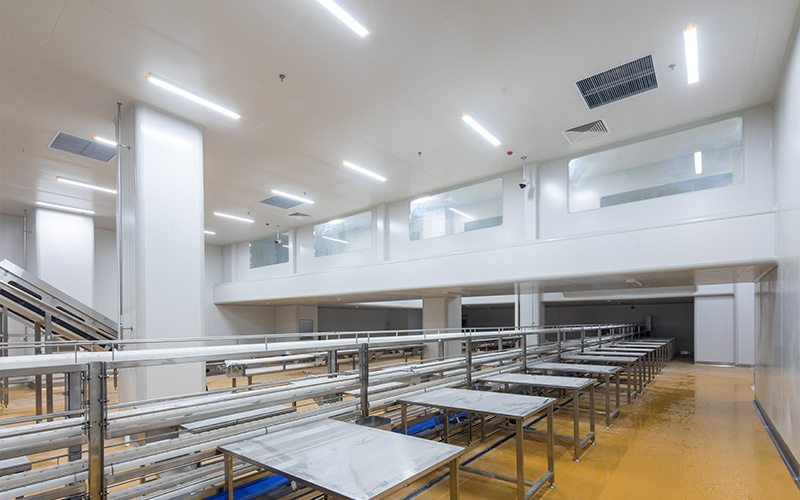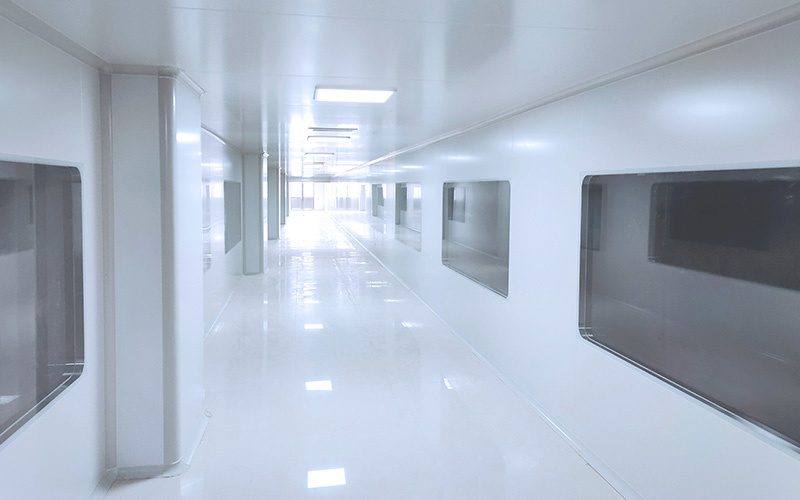We have a passion for unconventional solutions that bring your vision to life.
Food hygiene directly affects people's health. Whether it is a processing workshop or a packaging workshop in a food factory, there are very high hygiene standards and requirements. Among them, microbial contamination is the most important factor affecting the quality of food, and it is also the focus of clean engineering in food packaging workshops and processing workshops. Therefore, in the field of food production, it must be clean and safe. According to national production standards, food clean rooms need to meet the 100,000-level air purification standard. The construction of clean workshops in food factories can effectively reduce the deterioration of the products produced, extend the shelf life of food, and improve production efficiency. As the largest manufacturer of cleanroom panels in China, Wiskind puts forward the following precautions for the construction of food cleanroom factories.

1. What is a clean room?
Clean room is also called dust-free workshop, clean room, and clean room. It refers to the removal of particles, harmful air, bacteria and other pollutants in the air within a certain space, and the indoor temperature, cleanliness, indoor pressure, Air velocity and air distribution, noise, vibration, lighting, and static electricity are controlled within a certain range of requirements, and a specially designed room is given. No matter how the outside air conditions change, the room can maintain the originally set required performance characteristics such as cleanliness, temperature, humidity, and pressure.
What is a class 100,000 clean room?
There are no more than 3.52 million particles with a diameter of ≥0.5μm per cubic meter of air in the workshop. The fewer particles in the air, the less dust and microorganisms, and the cleaner the air. The 100,000-class clean room requires 15-19 air exchanges per hour in the workshop, and the air purification time after complete air exchange does not exceed 40 minutes.

How is the food clean room distributed?
General food clean room can be divided into three areas: non-clean area, quasi-clean area, clean operation area.
Non-clean areas: general storage areas for raw materials, finished products, tools, packaging and finished products transfer areas and other areas with low exposure risk of raw materials and finished products, such as outer packaging room, raw and auxiliary material warehouse, packaging material warehouse, outer packaging workshop, finished product warehouse, etc.
Quasi-clean area: no need for secondary dressing, such as raw material processing, packaging material processing, packaging, buffer room (unpacking room), general production and processing room, non-ready food inner packaging room and other finished product processing but not directly exposed areas.
Clean operation area: Refers to the highest sanitary environment requirements, personnel and environment requirements are high, and must be disinfected and changed before entering, such as: raw materials and finished products exposed processing areas, cold processing rooms for edible foods, cooling rooms for ready-to-eat foods, and waiting for packaging Storage room for instant food, inner packaging room for instant food, etc.
Points to note in clean room construction?
1. The calculation of air exchange rate in the workshop must have sufficient air exchange rate and ensure positive pressure.
2. The temperature and humidity control in the workshop has reached the requirements.
3. The locker room, buffer room, hand washing and disinfection, and other facilities for the staff's secondary change are designed to meet the requirements of the staff.
4. The design of the air shower room.
5. The installation of environmental disinfection facilities in the workshop, such as ultraviolet lamps.
6. The installation of anti-rodent and fly-proof facilities in the workshop, such as fly-killing lights.
7. The location of the air inlet of the workshop should be set up at the air inlet, and there should be a filter system, and should be closed when the machine is shut down.
8. The design of the return air outlet or the return air wall ensures easy cleaning.
9. Treatment of the workshop floor and sewers without stagnant water, and ensure that the sewers are deodorized.
10. The design of the safety door in the workshop to ensure the safety of employees.

Wiskind Cleanroom specializes in cleanroom enclosure system , ceiling system, cleanroom doors and windows and related product development, manufacturing, sales, consulting and services.